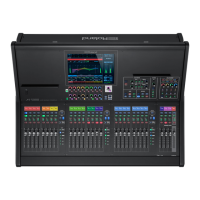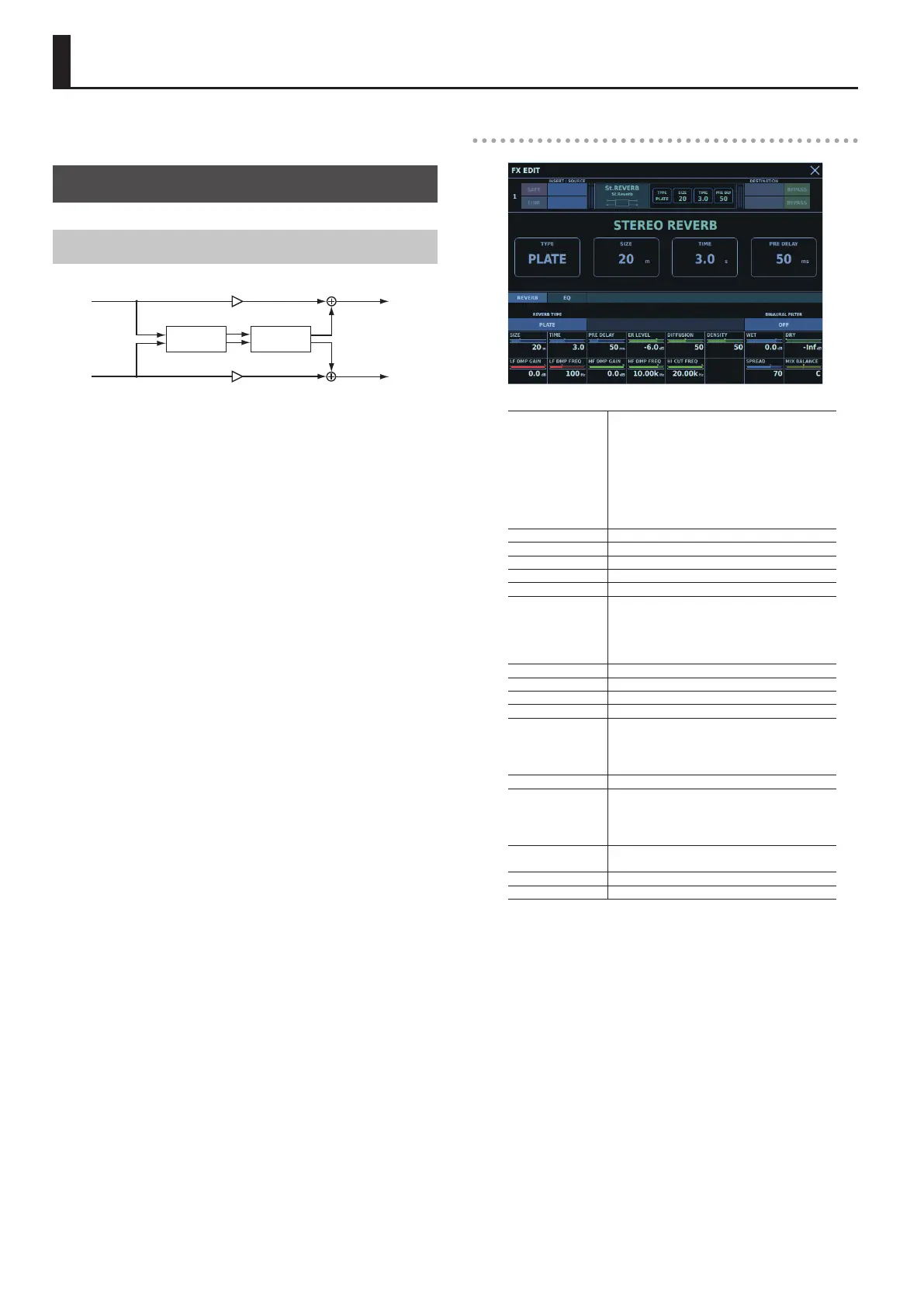142
About Eect Types
This section covers the 22 high-quality eect types you can select
on the M-5000.
Reverb
STEREO REVERB
Input L
Input R
Stereo
Reverb
DRY
DRY
4 Band EQ
Output L
Output R
This is a stereo-in, stereo-out reverb. It adds reverberation without
impairing the position of the sound image that’s been set for the
stereo input, by panning or other means.
When STEREO REVERB is selected, two tabs are displayed.
REVERB Tab
REVERB TYPE
Type of reverb
5 ROOM1
5 ROOM2
5 HALL1
5 HALL2
5 HALL3
5 PLATE
BINAURAL FILTER Binaural lter
SIZE Size of the room or hall
TIME Length of the reverberation
PRE DELAY Time until the reverb is heard
ER LEVEL Level of the early reections
DIFFUSION
Adjusts the change in the density of the reverb
over time.
The higher the value, the more the density
increases with time. The eect of this setting is
most pronounced with long reverb times.
DENSITY Density of the early reection/reverb sound
WET Level of the reverb sound
DRY Level of the original sound
LF DMP GAIN Low-frequency attenuation of the reverb sound
LF DMP FREQ
Frequency at which the low-frequency region of
the reverb sound begins to be attenuated
* This setting is in eect even when LF DAMP
GAIN is 0 dB.
HF DMP GAIN High-frequency attenuation of the reverb sound
HF DMP FREQ
Frequency at which the high-frequency region of
the reverb sound begins to be attenuated
* This setting is in eect even when HF DAMP
GAIN is 0 dB.
HI CUT FREQ
Frequency at which the high-frequency region of
the reverb sound will be cut
SPREAD Reverb spread
MIX BALANCE L/R output level balance of the reverb

